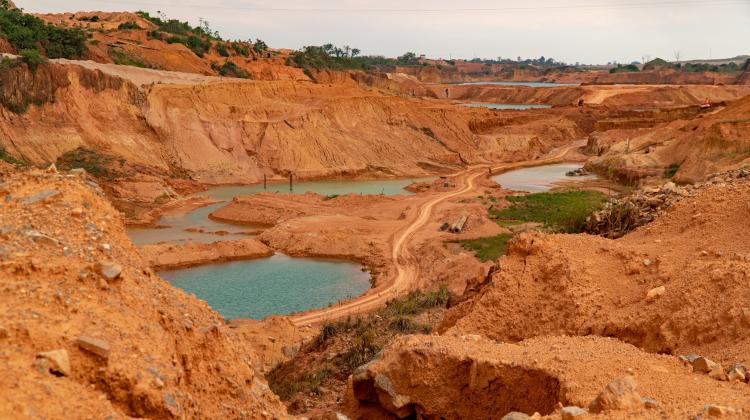Providence of ancient craftsmen will help in the restoration of 2 thousand years old mosaics

In Gonio, Georgia Polish archaeologists will use stone parts left by the ancient craftsmen to renovate the mosaic they discovered last year. The decor is located in the Roman military baths in the in fort Apsaros.
The mosaic discovered by Poles in Gonio is a unique find. "This is one of the few examples of luxurious floor finishing in the baths built for own use by the Roman military" - told PAP Dr. Radosław Karasiewicz-Szczypiorski from the Institute of Archaeology at the University of Warsaw, head of the Polish part of the expedition. Head of the Georgian side is the director of the Archaeological Museum in Gonio, Prof. Shota Mamuladze.
After the discovery of mosaic last year, it was covered with fabric and a layer of sand to temporarily secure it. In the coming days, archaeologists will uncover the find and the restorers from the Academy of Fine Arts in Warsaw will work on it. Over two thousand years, the mosaic has been partially destroyed and the missing pieces must be replaced. There are also plans to display it for tourists.
"The task of restorers will be easier than usual" - said Dr. Karasiewicz-Szczypiorski. "In another part of the study area we found a pit filled with tesserae, or stone cubes used for laying the mosaic. This stock, left by the craftsmen 2000 years ago, will be used to renovate our mosaic" - announced the scientist.
The room is decorated with mosaics was part of the bath. This year, Polish archaeologists expanded the scope of their research, because they wanted to determine the area the baths had occupied. As a result, they found the furnace and the hypocaust, which was the underground part, where hot air circulated and heated the pools and floors in the bath.
"We managed to capture the confines of the building from the north, east and south" - Dr. Karasiewicz-Szczypiorski reported on the research in the baths.
This year, archaeologists also found the floor of a room older than that with the large mosaic found last year.
"It lies much deeper, and on its surface there are remnants of another mosaic" - said Dr. Karasiewicz-Szczypiorski. Its size and pattern are difficult to determine at this point.
This year\'s excavations have allowed for more accurate dating of the baths. The baths were built in the mid-1st century AD. A little later they were completely rebuilt. Renovated baths were destroyed probably during the reign of Hadrian or his successor, i.e. in the first half of the 2nd century AD.
PAP - Science and Scholarship in Poland, Szymon Zdziebłowski
szz/ mrt/ zan/
tr. RL
Przed dodaniem komentarza prosimy o zapoznanie z Regulaminem forum serwisu Nauka w Polsce.

















